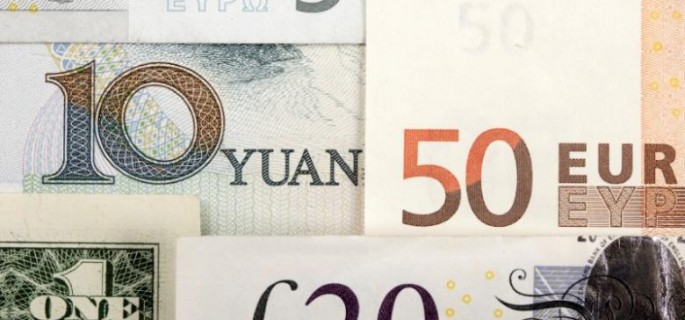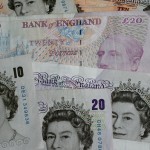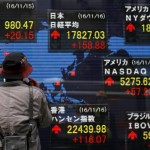Pound Plumbs New 31-Year Lows Against Dollar

The British pound continued to slump in trading Wednesday, touching fresh 31-year lows against the dollar, and a new five-year low against the euro.
Sterling fell to as low as €1.1309 as markets opened in Europe, surpassing its 2013 lows and falling to levels last seen in 2011.
Against the dollar, the pound fell to as low as $1.2685, its weakest against the greenback since 1985.
The pound has been beaten down from above $1.30 last week, following Prime Minister Theresa May’s speech to the U.K. Conservative party conference over the weekend.
The speech confirmed that the U.K. would trigger the two-year negotiating period required to leave the European Union by March, and stressed that the highest priority in upcoming talks would be placed on regaining authority over immigration policy.
Other European Union leaders have insisted that the freedom of movement of EU citizens is required to retain access to the single market, the EU’s internal trading bloc.
Investors worry the exit could hurt trade and investment in the U.K. and damage the country’s important financial sector, considerations that have weighed on the pound.
The pound’s tumble, though, comes in a week where three positive business surveys have suggested the U.K. is enjoying stronger economic growth than forecasters had expected.
The September purchasing managers index for the services sector, published by IHS Markit, came in at 52.6 on Wednesday, above the 52.2 predicted. That follows similarly stronger-than-expected readings for the manufacturing and construction sectors. Any score over 50 indicates growth.
But the upbeat economic news has failed to dent the decline in the pound, as analysts stress the importance of the political outlook over coming years, rather than the short-term performance of the economy.
“Hard Brexit has become a meaningful risk,” said Deutsche Bank macro strategist Oliver Harvey in a note Wednesday, referring to the possibility of the U.K. leaving the single market. “With political risks growing and much of the flow impact yet to be felt, we remain bearish sterling.” The bank expects another 10% decline in the pound.
Analysts at Credit Suisse also cut their three-month target for the pound from $1.34 to $1.22, based on the content of Mrs. May’s speech.
Sterling has barely risen above $1.34 since the June 23 Brexit vote, as investors fret about the British economy and the likelihood of further Bank of England action to support growth.
This year, sterling has been among the worst-performing major currencies against the dollar. Most currencies of the G-10 industrial economies, the 10 most commonly traded in foreign-exchange markets, are up against the dollar. The British pound is down 13.6% year-to-date, more even than the battered Mexican peso, which has fallen 10.6% on the back of concerns over the outcome of the U.S. presidential election.
The slide threatens to deepen the divide between winners and losers among British companies, with big multinationals and exporters largely benefiting, and importers—and potentially consumers—suffering from higher costs.
The weaker pound boosted drugs giant GlaxoSmithKline PLC’s core operating-profit growth to 36% from 15% in the second quarter.
It has added some “12% to 13% to the bottom line” of U.K. plastic components manufacturer Osprey Ltd, Managing Director Jeff Smith said. The northern England-based company’s sales in euros are now worth more, and the company is able to quote lower prices for new contracts.
“It’s a comfortable feeling going to Europe now, because we are cheaper,” he said.
The pound’s tumble is less comfortable for companies that import materials or goods.
Dakram Materials Ltd., a chemicals supplier and distributor of cobalt and nickel products, is paying more for the dollar-denominated commodities it uses.
“It has changed our strategy,” Managing Director Kate Migay said of the higher costs and the wider impact of Brexit, adding the company is now considering new revenue streams.
British companies’ raw material costs rose in August at the fastest annual pace in nearly half a decade. Overall import prices rose 9.3% year over year.
Source: WSJ





























